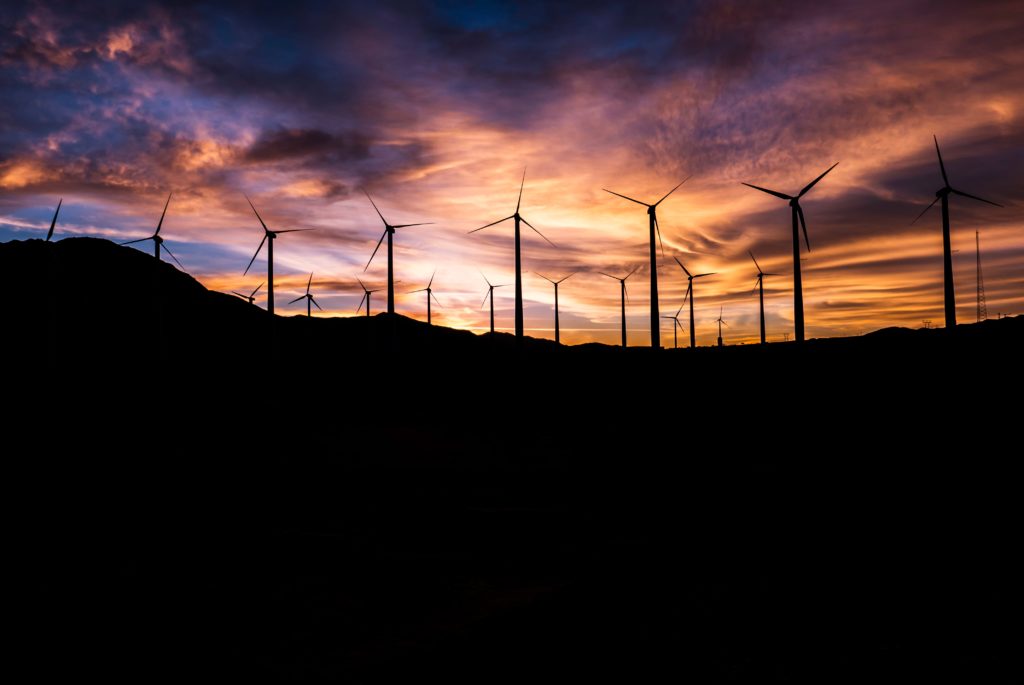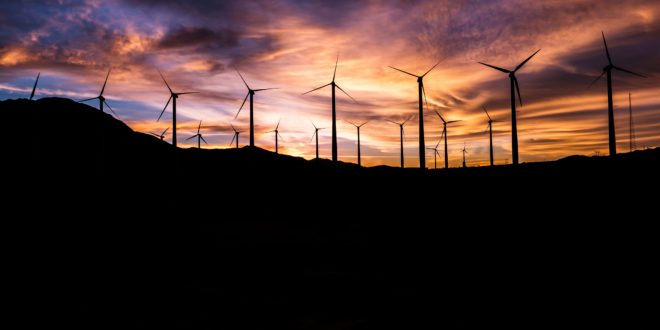Of all the renewable forms of energy that have been promoted around the world, one of the “flagship” technologies has been wind energy. Leaving aside traditional energy technologies like hydro which just happened to be renewable, wind energy was one of the first technologies to be commercialised purely because it was a renewable. But the gloss is rapidly wearing off wind and it may now struggle to even maintain let along increase its share of total world electricity generation.
I have already looked at wind in other articles and made the point that in a sense calling wind energy generation a renewable is a bit misleading.! Almost all of the cost of wind energy generation lies in the capital equipment ie the wind turbines, and the large amounts of steel and concrete they embody have been provided courtesy of technologies using fossil fuel energy, particularly coal. If all components of a wind energy complex, including the turbines, were genuinely based on renewables only, the cost would be greater than the apparent present cost and the impact on greenhouse emissions smaller..
In the rush to install wind turbines some other fundamentals have also been overlooked or their significance minimised.
The first is that of the visual environmental impact. One or two turbines may look attractive, but the large farms that have been created in many locations in the world are simply an eyesore – I would rather have an attractive and useful hydro lake – accepting that some locations should be left untouched – any day of the week. I think this environmental impact will become more of a factor as time goes by.
The second is that the extent to which wind turbines produce at their rated output has turned out to be generally much less than anticipated – either because the wind is not blowing strongly enough, or because the turbines have to be shut done because the wind is too strong or violent. In the Northern Hemisphere particularly, it also seems that design conditions for the availability of wind have been overestimated, and this could in part be due to the turbines themselves.
The third is that wind turbines have required more maintenance than expected and are likely to have a shorter economic life – in both cases I think reflecting an overly optimistic view of real-life operating conditions. Both factors push up the cost significantly.
The fourth is that some wind farms have been set up in what can only be called crazy locations, that invite poor performance. The worst example is the windfarms erected in the North Sea – an area well known for unpredictable and violent weather. The general view is that these turbines will only last for a fraction of their planned life and will not be replaced.

It is also well-known that forms of intermittent generation such as wind require back-up for periods when the wind is not blowing or the turbines cannot operate. Backup can take the form of storage or backup generation – very commonly gas-fired turbines which can be run up to full output very quickly. Water storage through hydro lakes is another existing form of backup. However, the extent to which backup is required had generally been underestimated and there are reports of coal-fired plants and nuclear stations being considered for recommissioning to fill this role. In some cases, this has led to the introduction of wind actually increasing greenhouse emissions rather than reducing them.
Finally, there is a growing lack of enthusiasm for subsidising wind generation. In many countries subsidies were introduced to get wind energy “off the ground” and there was a general expectation that improvements in technology and operating experience, would eventually enable subsidies to be reduced and then phased out. In fact, subsidies have generally increased and have become an unacceptable and seemingly permanent burden in some cases. There are reports of some countries now withdrawing subsidies and the effect of this will be to halt any further growth in wind generation capacity.
There are partial exceptions to the picture painted above and I think one of them is our own country. New Zealand already has substantial hydro capacity and thus an ability to absorb some wind capacity without having to invest in backup capacity or storage. It also helps to have a self-contained electricity system with its own rules of operation. As a result, there is already significant installed wind capacity in New Zealand out and I think some ability to increase this without requiring investment in backup or storage. It helps that most of the wind capacity is installed in locations where it is not a visual eyesore – one of the benefits of a low population density and lots of back country. And conditions are ideal here. New Zealand sits right across the prevalent flow of westerly winds in the temperate zone and is a relatively windy country.
However, there are still challenges for New Zealand – the two that might need special attention are the impact of a growing fleet of electric vehicles on electricity demand, and the need to continue to be able to deal with “dry” years when hydro capacity is unable to provide backup.
Overall the future for wind energy looks gloomy. It will continue to feature in situations which suit its peculiarities but in general, I think growth will be curtailed, and it is likely that as turbines reach the end of their economic life many will not be replaced. Wind energy as a proportion of total world energy production will probably reduce – having barely made an impression at its peak.
So, what is the answer to more renewable generation? The two traditional sources – hydro and geothermal – will continue to make an important and probably growing impact, but will not be enough on their own. A very popular alternative is the solar panel and there are a significant number of new houses being built which have solar panels integrated into the roof design. However, solar panels suffer from many of the problems of wind energy – they are capital intensive and intermittent in their contribution. They are also awkward to integrate into the main power system through “buy back” arrangements from private operators (mostly households), particularly when a surplus is created when the sun is shining but the overall system demand for power is low.
However, they are a very appropriate solution in situations where the load is small and is relatively isolated – CTV cameras and road signs are an example. They are also a good contributor for situations such as the Pacific Islands where the alternative may be very expensive diesel generation. Anyone landing at Rarotonga airport, for example, cannot help but be struck by the large array of panels occupying much of the airport space. For these reasons, solar panels will certainly be a part of the overall solution. However, in global terms, the contribution will still be small.
While worldwide there is still a strong political commitment to renewables, the approach actually adopted will vary from country to country. I would bet that the number of cases in which 100% renewability is achieved will be relatively small. In many cases, a political decision (driven by economic realities) may be to stop short of 100% renewability and continue to include a significant amount of traditional capacity whether it is gas turbines, coal-fired generation or nuclear. I think an important role can be played by natural gas (essentially methane) which has the virtue of being clean and with a relatively low carbon content per unit of energy produced, and this will certainly be the situation in the US where there are large reserves of natural gas. However, the “winners” in this stand to be countries like New Zealand with both hydro and geothermal making up a majority part of the generation system giving us about 70% renewability without even trying! Even so, it will be a battle to make the step from 70 to 100% renewability.
By Bas Walker
This is another of Bas Walker’s posts on GrownUps. Please look out for his articles, containing his Beachside Ponderings.










Join the Discussion
Type out your comment here:
You must be logged in to post a comment.